When it comes to your dog's health, safety, and comfort, one of the most important things you can invest in is pest control. Every single time your dog goes frolicking in your backyard, they're exposed to a number of potentially dangerous pests.
Fleas and ticks are the most common infestations in dogs. These small insects can wreak havoc on your dog's skin. Untreated infestations can cause significant itching, rashes, and hair loss.
Not only that, but both fleas and ticks can lead to serious health issues.
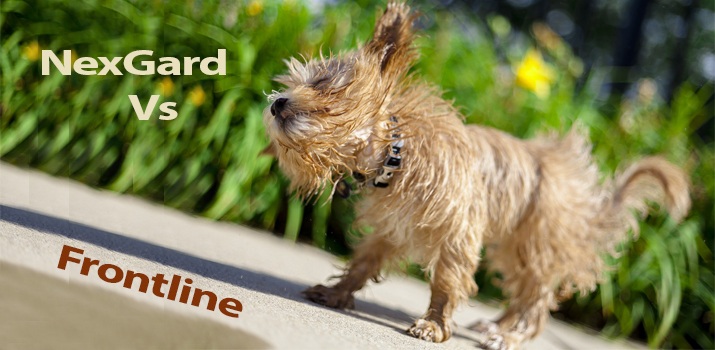
When pests bite into your dog's skin, they transmit bacteria and diseases. This can ultimately lead to a decline in overall health and death. Needless to say, keeping these pests under control is imperative.
In the last few decades, the veterinary world has made great strides in canine health. Pet owners from decades past had to rely on harsh spray-on chemicals that often did more harm than good. Luckily, pest control techniques are much simpler today.
A couple of notable pest control options have emerged as front-runners to keep dogs around the world safe. These include NexGard and Frontline. Both of these products are safe and effective. With that being said, they're also very different in terms of ingredients and use.
The Importance of Pest Control
Fleas, ticks, and other pests are dangerous for both you and your dog. While they may be microscopic in size, these little insects can cause a lot of harm. It's important to establish a solid pest control routine the moment your puppy is old enough to do so. You can also do your part to minimize the risks your dog faces each time they go outside.
Flea Risks
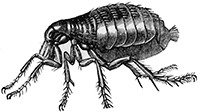
Every dog owner has had to deal with fleas at some point in time. Scientifically known as Ctenocephalides Canis, the common flea is a stubborn pest that can spread fairly quickly.
They're known for their incredible speed and jumping power. Unfortunately, this makes infestation very easy. Infestation can occur from simply brushing up against an infected animal.
Fleas reproduce quickly. Before you know it, your yard will have a large flea population. If your dog is carrying fleas when they enter your home, they can quickly spread through your carpet and furniture. While fleas typically go after dogs and cats, they will not hesitate to bite humans.
Flea bites cause inflammation and itching. Serious infestations can also lead to dermatitis and hair loss. However, one of the biggest things you should be concerned with is worms.
Many fleas carry tapeworms. Fleas don't transmit tapeworms through their bites. Instead, they're transmitted when the flea is eaten. If you have ever seen your dog chew on their backside trying to relieve an itch, they're a very high chance that they ate a flea or two in the process.
While treating tapeworms is fairly simple, the chances of another tapeworm problem are quite high if your dog is not protected from fleas.
The Dangers of Ticks
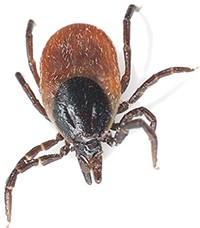
Ticks are blood-sucking insects that are often found in tall grasses and thick brush. They start out quite small, making them very difficult to see. However, as they feed, they balloon in size.
Their lower half can get up to half an inch long when they're engorged. Ticks can lay thousands of eggs and live as long as two months.
Diseases are the primary concern with ticks. They carry potentially lethal diseases that can affect both dogs and humans. Some diseases include Rocky Mountain Fever, Lyme disease, paralysis, and much more.
There are several different tick species out there. Some species are more prevalent in certain part of the country. They may also carry different diseases.
Hard to Get Rid Of
Ticks can be pretty tricky to find and get rid of. They will burrow between your dog's fur until they latch onto the skin. In most cases, owners don't find the tick until they have been feeding on their dog for several days.
Depending on the particular type of tick you're dealing with, it may feed for as long as 10 days.
Removing a tick is a delicate process, as the blood-filled abdomen of the insect can pop. When this happens, your dog is at an even higher risk for infection, especially when the head is still latched onto their skin.
How Do NexGard and Frontline Work?
Both of these pest control products work similarly. They kill fleas, ticks, and other pests by attacking their nervous system. While they do this job in different ways, the outcome is the same.
When the pest comes into contact with the active ingredient, they lose all control of their nervous system. This prevents them from moving, causing them to die pretty quickly. As a result, the population of pests on your dog cannot get any larger.
NexGard
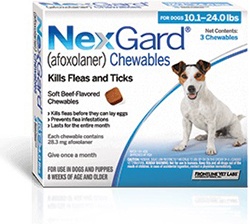
Nexgard is a relatively new product that attacks fleas from within your pup's body. It's a systemic product that comes in tablet form. When your dog eats the pill, the active ingredients flow into your dog's bloodstream to provide protection for up to 30 days.
If you're worried about getting your dog to eat the pill, don't fret. It's available with a beef flavor so that you can easily add it to your pup's kibble. Alternatively, you can hide it in a treat for easy administering.
The medication takes approximately 24 hours to become active. It needs to get into your dog's bloodstream before it can start killing pests. Once it's active, it only takes four to eight hours to kill adult fleas after a bite. It's quick enough to prevent the flea from laying eggs and expanding the flea population.
When it comes to ticks, Nexgard takes between 24 and 48 hours to kill the insect after a bite. Nexgard is effective in killing four different types of ticks. These include the Black Legged tick, the American dog tick, the Brown tick, and the Lone Star Tick.
Active Ingredients
The active ingredient in NexGard is Afoxolaner. Afoxolaner is a chemical pesticide that's effective in blocking channels within an insect's nervous system. However, it's considered to be safe in mammals with the proper dosage.
Prescription Required
One of the most notable aspects of NexGard is that it is a prescription product. You can only get it with a prescription from your veterinarian. Your vet will be able to determine if your dog will benefit from the tablet or if they may experience any adverse side effects.
They can also determine the proper dosage to ensure that your pup stays safe and healthy. Because it is a prescription medication, it does come with a higher price tag than over-the-counter alternatives.
Side Effects
There are some side effects you need to be aware of. It's important to remember that NexGard contains a chemical pesticide. This comes with a certain amount of risks. Some dogs may even be allergic to the active ingredients. To ensure that it's safe for your furry friend, consult with your vet.
The main side effects your dog may encounter include vomiting, diarrhea, lack of energy, decreased appetite, and itching. If these symptoms persist, see a vet immediately. NexGard is a systemic product that stays in your dog's bloodstream. Serious symptoms will require immediate veterinary care.
In rare instances, NexGard may also cause seizures. Dogs with a history of seizures should not take the medication. Also, pregnant dogs or young puppies under the age of eight weeks should avoid it as well.
Advantages
NexGard has become a popular choice among pet owners because of its effectiveness and ease of use. The medication is very easy to administer and provides a month of protection.
Instead of having to worry about the issues that often come with topical products, you can simply give your dog a NexGard pill and forget about flea or tick issues.
Of course, you should always take additional precautions to avoid infestations. However, the simplicity of NexGard makes it a great option for most dog owners.
Another great advantage is that it's usually safe with other medications. Many veterinarians prescribe it alongside a heartworm preventative.
Disadvantages
When it comes to disadvantages, the biggest issue with NexGard is how it works. It doesn't sit on top of your dog's skin. As a result, fleas can easily hitch a ride on your dog's fur to get into your home or yard.
Nexgard is only effective when the insect takes a bite. That's when the active ingredient in your dog's bloodstream will kill off the flea or tick.
Another disadvantage is accessibility and restrictions. As mentioned earlier, it's a prescription-only product. You can't just stop by your local pet store to pick it up. This can prove to be problematic for owners who don't have easy access to a vet.
Furthermore, NexGard takes at least a day to become effective. If you need immediate results, NexGard will not provide them to you. As for restrictions, NexGard is not suitable for small dogs under four pounds. It can be dangerous for tiny breeds.
Frontline
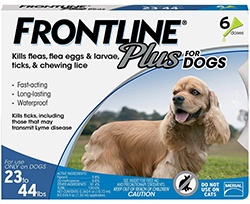
Frontline is a topical pest control options. Unlike NexGard, Frontline is applied to your dog's skin. It usually comes in small, dosage-sized tubes. To apply it to your dog, you must separate the fur and squeeze the tube along the length of their back, starting between the shoulder blades.
Once dried, the active ingredients are absorbed into your pup's sebaceous glands. It's then slowly released throughout the month to create an effective barrier.
When pests make physical contact with the medication, their nervous system is compromised and they die within hours.
Fleas are killed between 4 and 12 hours after contact. Ticks die between 24 and 48 hours after contact. Frontline is unique in the fact that it can provide a broader range of protection against different types of pests. In addition to fleas, it can take care of flea eggs, larvae, ticks, two different species of lice, and skin mites.
Active Ingredients
There are two active ingredients in Frontline that work to protect your pooch. These are Fipronil and Methoprene.
Fipronil is an insecticide that is often used in farming applications. Methoprene is a unique chemical that's designed to stop the growth cycle. It effectively stops eggs from growing into adults.
Both of these ingredients are known for having some environmental effects. Fipronil, in particular, is banned for farming in the European Union because it can affect bee colonies. The ingredients may also cause issues if ingested by dogs or humans.
Over the Counter Protection
Frontline is a non-prescription product. You can easily find it online or at your local pet shop. Generally, it's much more affordable than prescription options. It's available in a range of dosages so that you don't have to do any measuring.
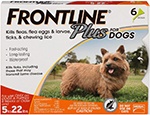
Frontline Plus for Dogs Small Dog (5-22 pounds)
[easyazon_link identifier="B0002J1FLW" locale="US" tag="dailydogg-20"]Check on Amazon[/easyazon_link]

Frontline Plus for Dogs Medium Dog (23-44 pounds)
[easyazon_link identifier="B0002J1FNK" locale="US" tag="dailydogg-20"]Check on Amazon[/easyazon_link]
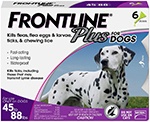
Frontline Plus for Dogs Large Dog (45 to 88 pounds)
[easyazon_link identifier="B0002J1FOO" locale="US" tag="dailydogg-20"]Check on Amazon[/easyazon_link]
Side Effects
Because Frontline is applied directly to your dog's skin, there is a risk of irritation. Your dog may not react well to the various chemicals. Common side effects include mild irritation and some hair loss at the application site.
Oftentimes, the irritation will subside once its absorbed. If not, it's important that you see your vet. Some dogs will experience more dramatic physical reactions due to hypersensitivity. They can suffer from swelling, diarrhea, vomiting, and seizures.
* Stomach issues are common if significant amounts of the solution are ingested.
Advantages
Frontline has been the go-to option for dog owners who want immediate results. The topical solution kills pests on contact. With NexGard, fleas and ticks have to bite your dog to get killed. That's not the case with Frontline. Simply getting into your dog's fur is all it takes.
Another advantage that comes with the topical nature of Frontline is that it can be washed off. If your dog suffers from adverse reactions, you can give your pup a thorough cleaning to remove it from their skin.
Disadvantages
While being a topical solution does provide benefits, it also comes with some downsides. Frontline needs to dry for at least 24 hours. Otherwise, it can get rubbed off on your furniture or hands.
If you have small children that frequently touch your dog, this could pose a health risk to them. Remember, the active chemical ingredients in Frontline can be dangerous to both canines and humans. I
n addition to keeping children away, you'll have to prevent your dog from licking their back during those 24 hours. This is not an easy task due to the product's distinct smell.
Pest Immunity
Fleas and ticks can be incredibly resilient. In some parts of the country, fleas have developed an immunity to Frontline. This renders the product useless. If you live in one of these areas, fleas will continue to thrive and feed off your dog as if the solution wasn't there.
It should also be noted that Frontline is not suitable for treating all types of ticks. There are certain tick species, such as the American dog tick, that are not affected by the ingredients in Frontline.
Which One is Right for Your Dog?
NexGard and Frontline are both great options. The product that's right for you and your dog will depend on a number of factors. It's important that you consider each product's advantages and disadvantages before you make a decision.
Types of Pests
Consulting with your vet about the types of pests your pup is exposed to can help you get a better idea of which product will be most effective. Take a look at the specific tick species in your area.
Overall Health
Does your dog have any allergies? Are they prone to skin irritations? Frontline is generally considered to be a better option for dogs that have health concerns because it's applied to the skin. However, if your pup is in good health, they can benefit from the protection that NexGard offers.
Price
There is a pretty significant price difference between NexGard and Frontline. While the higher price tag is certainly a worthy investment in your dog's health, it can be difficult if you have multiple dogs.
Take this into account and see which product fits into your budget. Keep in mind that both options will be a regular investment throughout your pup's life.
Safety
Examine your dog's behavior and make note of the interactions your dog has with people. NexGard can be an excellent option for young rambunctious pups. You don't have to wait on drying times or worry about outside exposure. However, if you have a relaxed dog with no children around, Frontline may be for you.
Conclusion
Choosing the right pest control product for your dog is an important decision. Regardless of which option you choose, having some protection against pests is better than having none at all. While no product will eradicate pests completely, they can make a drastic difference in your pup's health and comfort.
Also Read: How to Deal with Bad Dog Breath: Treats & Fresheners

